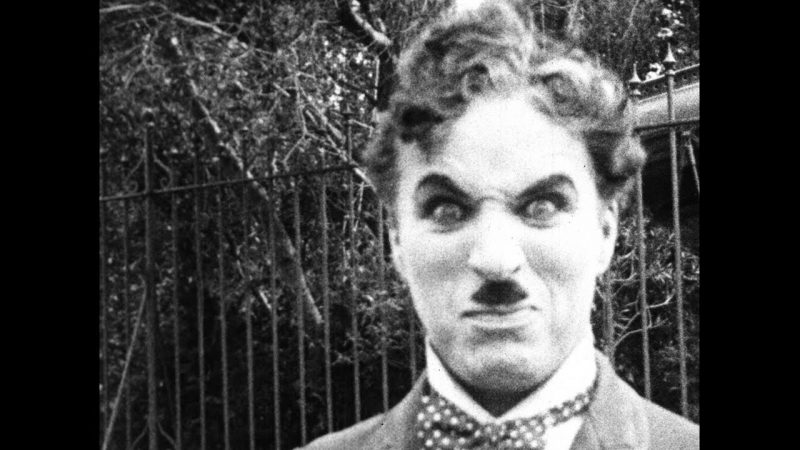City Lights was immediately successful upon release on January 30, 1931, with positive reviews and box office receipts of $5 million. Today, critics consider it not only the highest accomplishment of Chaplin’s career, but one of the greatest films ever made. In 1992, the Library of Congress selected City Lights for preservation in the United States National Film Registry as being “culturally, historically, or aesthetically significant”.
Watch this super rare footage of Charlie Chaplin directing the movie:
Filming for City Lights officially began on December 27, 1928, after Chaplin and Carr had worked on the script for almost an entire year.As a filmmaker, Chaplin was known for being a perfectionist; he was noted for doing many more “takes” than other directors at the time.Production began with the first scene at the flower stand where the Little Tramp first meets the Blind Flower Girl. The scene took weeks to shoot, and Chaplin first began to have second thoughts about casting Cherrill. Years later, Cherrill said, “I never liked Charlie and he never liked me.” In his autobiography, Chaplin took responsibility for his on-set tensions with Cherrill, blaming the stress of making the film for the conflict.Filming the scene continued until February 1929 and again for ten days in early April before Chaplin put the scene aside to be filmed later. He then shot the opening scene of the Little Tramp waking up in a newly unveiled public statue. This scene involved up to 380 extras and was especially stressful for Chaplin to shoot.During this part of shooting, construction was being done at Chaplin Studios because the city of Los Angeles had decided to widen La Brea Avenue and Chaplin was forced to move several buildings away from the road.
Chaplin then shot the sequence where the Little Tramp first meets the millionaire and prevents him from committing suicide. During filming, Henry Clive suddenly decided that he did not want to jump into the tank of cold water in the scene, causing Chaplin to storm off the set and fire Clive. He was quickly replaced by Harry Myers, who Chaplin had known while under contract at Keystone Studios. Chaplin finished shooting the sequence on July 29, 1929 with exteriors at Pasadena Bridge.[22] Chaplin then shot a sequence that was eventually cut from the film involving the Little Tramp attempting to retrieve a stick that was stuck in a wall. The scene included a young Charles Lederer; Chaplin later praised the scene, but insisted that it needed to be cut.He then continued filming the scenes with the millionaire until September 29, 1929.
In November, Chaplin began working with Cherrill again in some of the Flower Girl’s less dramatic scenes. While waiting for her scenes for several months, Cherrill had become bored and openly complained to Chaplin. During the filming of one scene, Cherrill asked Chaplin if she could leave early so that she could go to a hair appointmentChaplin fired Virginia Cherrill and replaced her with Georgia Hale, Chaplin’s co-star in The Gold Rush.However, Hale’s screen tests proved that she was unsuitable for the role.Chaplin also briefly considered sixteen-year-old actress Violet Krauth, but he was talked out of this idea by his collaborators. Chaplin finally re-hired Cherrill to finish City Lights.She demanded and got a raise to $75 per week.Approximately seven minutes of test footage of Hale survives and is included on the DVD release; excerpts were first seen in the documentary Unknown Chaplin along with an unused opening sequence.
Chaplin then cast Florence D. Lee as the Blind Girl’s grandmother and shot scenes with Cherrill and Lee for five weeks. In late 1929, Chaplin re-shot the first Flower Shop scene with Cherrill. This time, the scene was completed in six days and Chaplin was happy with Cherrill’s performance. Chaplin had been shooting the film for a year and was only a little more than half way finished. From March to April 1930, Chaplin shot the scenes inside of the millionaire’s house at the Town House on Wilshire Boulevard. He hired Joe Van Meter and Albert Austin, whom he had known since his days working for Fred Karno, as the burglars. In the late spring of 1930, Chaplin shot the last major comedy sequence: the boxing match.Chaplin hired Keystone actor Hank Mann to play the Tramp’s opponent. The scene required 100 extras and Chaplin took four days to rehearse and six to shoot the scene and was shot between June 23 and 30.Chaplin was initially nervous over the attendance for this scene so he invited his friends to be extras. Over 100 extras were present. Chaplin’s performance in the scene was so humorous that more people arrived daily to be an extra.
In July and August, Chaplin finished up six weeks of smaller scenes, including the two scenes of the Tramp being harassed by newsboys, one of whom was played by a young Robert Parrish.[30]
In September 1930, Chaplin finished the shooting of the final scene which took six days. Chaplin said that he was happy with Cherrill’s performance in the scene, and that she had eventually understood the role. When talking about his directing style on set, Chaplin stated that “everything I do is a dance. I think in terms of dance. I think more so in City Lights.”
